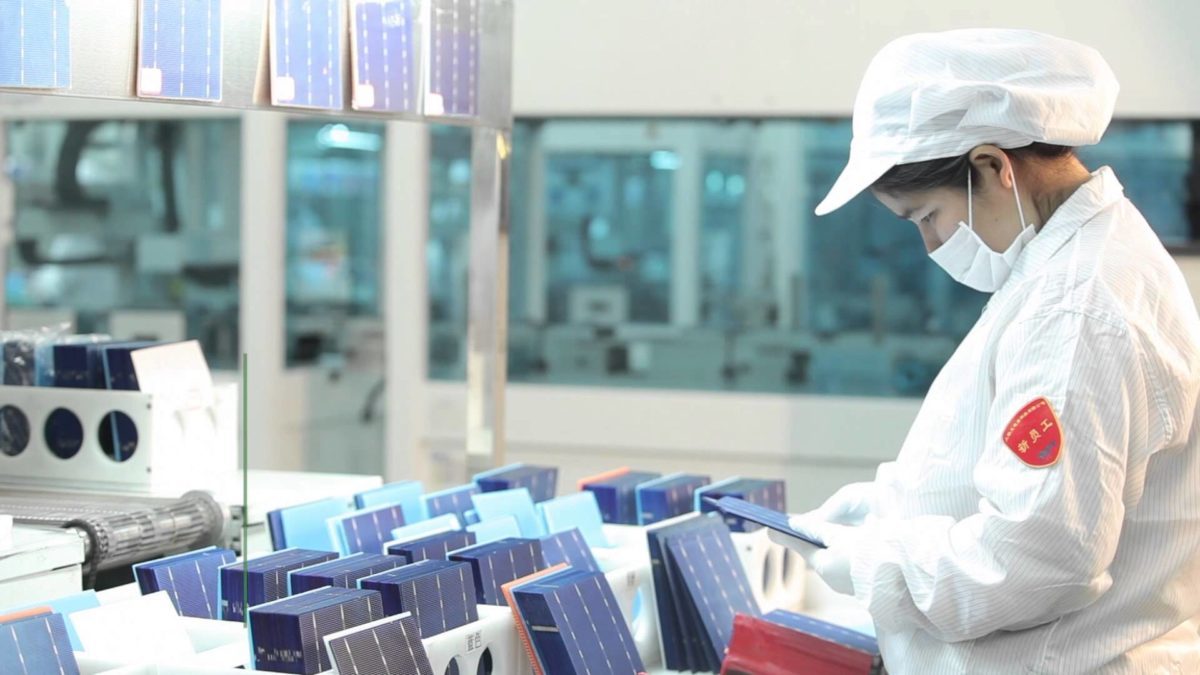As the year comes to an end, PV manufacturers have been given some cause for optimism. “The market demand this week has increased, and the supply chain has bounced back. Downstream momentum is expected to boost the upstream and overall supply chains,” analysts of EnergyTrend observe in a commentary published on Thursday.
While demand for polysilicon and crystalline wafers has increased, prices have remained stable, and there has been positive regional developments for cell and module makers.
Polysilicon
According to EnergyTrend, relatively large reserves has caused the price for polysilicon to remain flat. Looking at December order books, EnergyTrend see a continued increase in demand, which will work to diminish the accumulated stockpiles. Prices for polysilicon outside of China, at present, range between $8.50 to $10.20 per kilogram. The average trading price outside of China currently ranges between $8.30 and $9.00 per kilogram, says PV Info Link.
Wafer
Looking at wafers, however, a price difference between the Chinese and non-Chinese was reported. The prices for mono- and multicrystalline wafers in China remained stable in spite of increased demand. However, EnergyTrend also cautions that within the next week price increases can be expected.
By contrast, PV Info Link, already sees a minor price hike for multicrystalline wafers, due to the increased demand. Prices for wafers outside of China are affected by currency exchange rates, rendering a slight increase and further easing stress on manufacturers. There are no notable developments for monocrystalline wafers.
In its most recent note, EnergyTrend remarks that the increased demand for multicrystalline wafers outside of China has already caused prices to climb. For monocrystalline wafers prices remained at $0.38 to $0.39 per piece. The costs for multicrystalline wafers, on the other hand, increased to $0.255 to $0.275 per piece. Prices for products made from black silicon outside of China continued to be in the $0.305 per piece.
Solar cells
This week, EnergyTrend tracked more significant changes in solar cell pricing – particularly outside of China. The prices for cells on the Chinese market remained mostly unchanged, while they increased abroad.
Popular content
In China, the necessity to connect systems to the grid before year end was a driver of demand, as well as the momentum to accumulate stockpiles in Europe. The prices for multicrystalline solar cells have increased in the Chinese market as well as abroad, due to increased demand.
According to estimates by Energytrend, multicrystalline solar cells outside of China cost on average $0.103 per watt. The prices for monocrystalline cells range between $0.121 and $0.129 per watt. Prices for high-efficiency monocrystalline solar cells prompt a higher average at $0.165 per watt.
Meanwhile, PV Info Link has seen a slight increase in demand for solar cells since mid November. Reportedly, prices for multicrystalline cells had been rising, since after the reductions in manufacturing capacity or the switch monocrystalline solar cells, a more balanced relationship between demand and supply was established. The higher demand could lead to the prices of multi- and mono- PERC cells continuing to climb throughout December, the analysts forecast.
Mono-PERC demand, in particular, is set to benefit from China’s Top-Runner program. Internationally also there is an upwards demand trend for the technology, fuelled in part by a Taiwanese installation boom before the end of the year. For mono-PERC cells, PV Info Link determined prices in the range of $0168 to $0.172 per watt.
Modules
EnergyTrend noted that it did not see any significant price trends for modules outside of China this week. Multicrystalline products continue to range between $0.205 and $0.265 per watt. For high efficiency and higher power output module concepts, prices are slightly higher.
For regular monocrystalline modules, EnergyTrend stipulates a price range between $0.242 and $0.360 per watt and for high efficiency products between $0.265 and $0.380 per watt. In China, on the other hand, prices for high efficiency modules and particularly low cost modules have slightly increased, while prices for the remaining module products remained stable, according to the EnergyTrend analysis.
PV Info Link observes that the strong demand from China in the fourth quarter of this year, as well the European dependency on low cost modules of Chinese origin – rather than from Southeast Asia – will improve the utilization rate of many Chinese Tier 1 and Ter 2 manufacturers. Module prices are forecast to remain mostly stable in China and abroad.
Broader supply chain impacts have been noted by PV Info Link in its analysis. The China-based analysts not that not only cell prices have been increasing lately, but also glass prices. Accordingly, the analysts observe that many glass manufacturers have increased prices by 10-15% in December, causing production costs for module manufacturers to rise correspondingly. Additionally, there is a rumor that multicrystalline module prices for those delivered in 2019 will be significantly lower and, as such, current estimates should be read with caution.
This content is protected by copyright and may not be reused. If you want to cooperate with us and would like to reuse some of our content, please contact: editors@pv-magazine.com.



1 comment
By submitting this form you agree to pv magazine using your data for the purposes of publishing your comment.
Your personal data will only be disclosed or otherwise transmitted to third parties for the purposes of spam filtering or if this is necessary for technical maintenance of the website. Any other transfer to third parties will not take place unless this is justified on the basis of applicable data protection regulations or if pv magazine is legally obliged to do so.
You may revoke this consent at any time with effect for the future, in which case your personal data will be deleted immediately. Otherwise, your data will be deleted if pv magazine has processed your request or the purpose of data storage is fulfilled.
Further information on data privacy can be found in our Data Protection Policy.